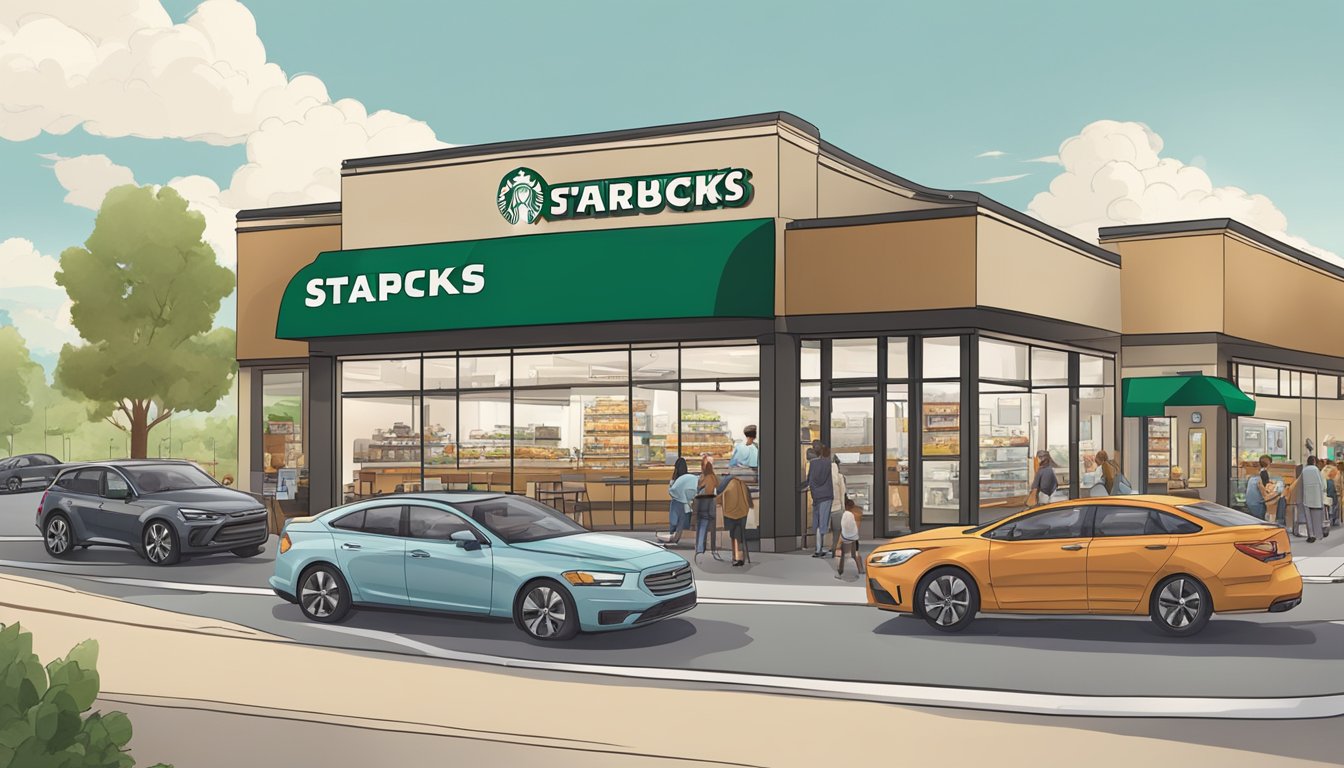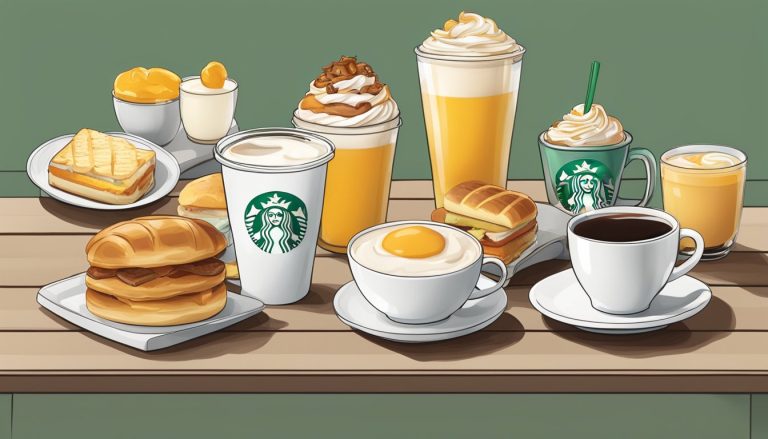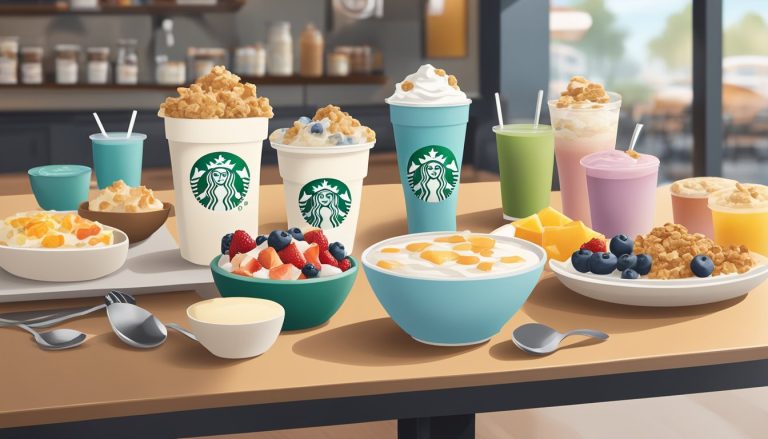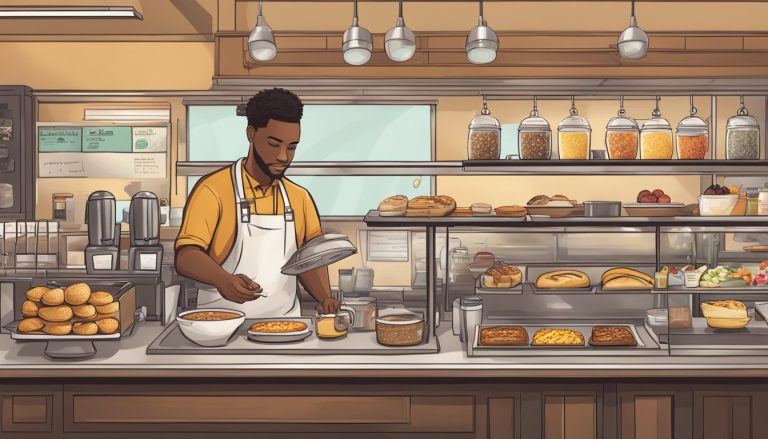Starbucks’ drive-thru service has revolutionized the way customers experience their morning coffee ritual. Since its introduction in the early 2000s, the drive-thru option has become an integral part of Starbucks’ business model, significantly impacting breakfast sales and overall revenue.
Drive-thru locations now account for a substantial portion of Starbucks’ new store openings, with more than half of new stores featuring this convenient service. This shift has allowed Starbucks to cater to on-the-go consumers who prioritize speed and efficiency during their morning routines.
The popularity of Starbucks’ drive-thru service has led to continuous improvements in menu offerings, technology, and customer experience. These enhancements have contributed to increased breakfast sales and stronger performance in the competitive quick-service restaurant sector. As consumer preferences evolve, Starbucks’ drive-thru strategy continues to play a crucial role in maintaining its position as a leader in the coffee industry.
History of Starbucks Drive-Thru
Starbucks introduced drive-thru service to meet changing customer needs and expand its market reach. This innovative approach revolutionized the coffee industry and significantly impacted Starbucks’ business model.
The Evolution of Drive-Thru Operations
Starbucks began implementing drive-thru services in the 1990s. Initially, these locations offered a limited menu to streamline operations. As demand grew, Starbucks expanded its drive-thru offerings to include a wider range of beverages and food items.
In 2010, Starbucks formed a cross-functional team to enhance drive-thru efficiency. They focused on defining customer zones, optimizing menus, and integrating new technologies.
Drive-thru and pickup orders became increasingly important, accounting for 80% of Starbucks’ orders before the COVID-19 pandemic. This percentage has since increased further.
Adaptations in the Coffee Industry
Starbucks’ success with drive-thru services prompted other coffee chains to follow suit. This shift changed the landscape of the coffee industry, emphasizing convenience and speed.
Drive-thru locations allowed coffee shops to serve customers quickly, catering to busy professionals and commuters. This model proved especially valuable during the pandemic when indoor dining was restricted.
Starbucks continued to invest heavily in drive-thru expansion. It became the largest capital expenditure in the company’s history, demonstrating the importance of this service channel.
The rise of drive-thru coffee shops also influenced store design and location selection. Companies began prioritizing sites suitable for drive-thru operations, often in suburban areas with high vehicle traffic.
Assessing the Impact on Sales
Drive-thru services have significantly influenced Starbucks’ breakfast sales performance. The convenience and speed offered by drive-thru locations have reshaped consumer behavior and boosted revenue streams.
Comparative Sales Analysis
Drive-thru locations consistently outperform traditional Starbucks stores in breakfast sales. Morning rush hour traffic generates substantial revenue, with drive-thru stores reporting 20-30% higher breakfast sales compared to non-drive-thru locations.
Peak hours between 6-9 AM see the highest drive-thru breakfast sales. Popular breakfast items like breakfast sandwiches and pastries account for 40% of morning drive-thru orders.
Drive-thru stores also show improved efficiency, serving 15% more customers per hour during breakfast times than cafe-only locations.
Drive-Thru Contribution to Total Revenue
Drive-thru sales now make up over 50% of Starbucks’ total revenue, marking a significant shift in the company’s business model. This percentage has grown steadily since 2005 when drive-thru locations first became a strategic focus.
Breakfast items sold through drive-thru contribute approximately 25% to Starbucks’ overall food sales. The company has reported a 10% increase in “out the window” sales compared to pre-pandemic levels.
Mobile orders completed through drive-thru have further boosted sales, with digital orders accounting for 20% of all drive-thru transactions during breakfast hours.
Customer Experience Optimization

Starbucks has revolutionized its drive-thru operations to enhance customer satisfaction and boost sales. The company’s focus on improving service quality, streamlining ordering processes, and optimizing customer zones has yielded significant results.
Exploring Customer Service Excellence
Starbucks partnered with King-Casey to analyze and improve its drive-thru customer service. They implemented video screens to maintain the personal connection between baristas and customers. This technology allows staff to greet customers by name and visually confirm orders.
The company also invested in extensive employee training programs. These initiatives emphasize efficient order-taking, accuracy, and friendly interactions. As a result, customer satisfaction scores have improved, and repeat visits have increased.
Starbucks regularly collects feedback through surveys and mystery shoppers. This data helps identify areas for improvement and implement targeted solutions.
Enhancements in Customer Operating Zones
Starbucks redesigned its drive-thru layouts to optimize customer flow and reduce wait times. Key improvements include:
- Dual-lane ordering systems at high-traffic locations
- Dedicated pickup windows for mobile orders
- Clearer menu boards with easy-to-read layouts
- Digital order confirmation screens
These changes have resulted in a 20% reduction in average service times. The streamlined process allows Starbucks to serve more customers during peak hours, particularly during the breakfast rush.
Ordering Systems Efficiency
Starbucks has embraced technology to enhance ordering efficiency. The company’s mobile app now allows customers to place orders before arriving at the drive-thru. This feature reduces wait times and improves order accuracy.
In-store systems have been upgraded to handle complex customizations more efficiently. Baristas now use intuitive touchscreen interfaces that streamline the order input process.
Starbucks has also implemented AI-powered suggestive selling tools. These systems analyze customer preferences and order history to provide personalized recommendations, increasing average transaction values.
Technological Advancements
Starbucks has leveraged cutting-edge technology to revolutionize its drive-thru experience. Mobile ordering and payment systems have streamlined operations and enhanced customer convenience.
Innovation in Mobile Ordering
The Starbucks App introduced mobile ordering functionality, allowing customers to place orders before arriving at the drive-thru. This feature significantly reduces wait times and improves order accuracy.
Customers can customize their drinks, select food items, and choose their preferred pickup location through the app. The system uses GPS to track the customer’s arrival, ensuring drinks are prepared at the optimal time.
Drive-thru operations have been enhanced with digital menu boards. These displays can be updated in real-time to reflect inventory changes and promote seasonal offerings.
Mobile Payment Integration
Starbucks pioneered mobile payment integration in the coffee industry. The app’s digital wallet feature enables customers to pay quickly and securely at the drive-thru window.
Rewards program integration allows customers to earn and redeem points seamlessly during drive-thru transactions. This encourages repeat visits and strengthens brand loyalty.
The mobile payment system also supports contactless transactions, addressing health and safety concerns. Customers can simply scan their phone at the drive-thru window to complete their purchase.
Data collected through mobile payments helps Starbucks personalize offerings and tailor marketing efforts to individual preferences.
Operational Considerations

Starbucks’ drive-thru operations require careful planning and continuous refinement to maximize efficiency and sales. Key factors include strategic design choices and identifying areas for operational enhancements.
Drive-Thru Design and Capital Expenditures
Starbucks invests significant capital in optimizing drive-thru layouts. The company focuses on streamlining traffic flow and reducing wait times. Key design elements include:
- Multiple ordering points
- Digital menu boards
- Separate pickup windows
These features aim to expedite service and improve customer satisfaction. Starbucks also implements zone-specific strategies, tailoring drive-thru designs to local markets and traffic patterns.
The coffee giant allocates substantial resources to technology integration. This includes:
- Mobile order-ahead capabilities
- AI-powered order suggestion systems
- Automated inventory management
While these investments require upfront costs, they often lead to long-term operational efficiencies and increased sales.
Identifying Operational Improvement Opportunities
Starbucks continuously analyzes drive-thru performance metrics to pinpoint areas for enhancement. Key focus areas include:
- Order accuracy
- Speed of service
- Customer satisfaction
The company utilizes data analytics to track these metrics across locations. This allows for the identification of best practices and underperforming stores.
Starbucks implements targeted training programs to address specific operational challenges. These may include:
- Barista efficiency workshops
- Drive-thru communication skills
- Peak hour management techniques
By focusing on these areas, Starbucks aims to maintain consistent service quality across its drive-thru locations. The company also encourages employee feedback to identify potential improvements in workflow and equipment.
Marketing and Branding Dynamics
Starbucks’ drive-thru service has transformed its marketing approach and brand positioning. The company has implemented targeted strategies to enhance customer loyalty and streamline the breakfast experience.
Drive-Thru Branding Initiatives
Starbucks has crafted a distinct drive-thru identity to complement its in-store ambiance. Eye-catching signage and menu boards showcase breakfast offerings prominently. The company emphasizes speed and convenience in its messaging, appealing to time-pressed morning commuters.
Digital menu displays allow for real-time updates and promotional content. Starbucks uses these screens to highlight limited-time breakfast items and seasonal beverages. The brand maintains its premium image through carefully designed drive-thru aesthetics that mirror the in-store experience.
Starbucks has also introduced exclusive drive-thru promotions to incentivize this service channel. These targeted offers aim to increase breakfast sales and encourage repeat visits.
Loyalty Programs Interplay
The Starbucks Rewards program plays a crucial role in drive-thru marketing efforts. Members can earn and redeem points on drive-thru purchases, fostering customer loyalty. The mobile app enables seamless ordering and payment, reducing wait times at the drive-thru window.
Personalized offers based on customer preferences and purchase history are delivered through the app. These tailored promotions often feature breakfast items, encouraging morning drive-thru visits. Starbucks leverages data analytics to optimize these offers and drive engagement.
The company has introduced drive-thru-specific perks for loyalty members, such as exclusive menu items or priority lanes during peak hours. These benefits enhance the value proposition of the Starbucks Rewards program and strengthen brand affinity among drive-thru customers.
Economic and Market Perspectives
Drive-thru services have reshaped the quick-service restaurant landscape, influencing consumer behavior and financial performance. Economic indicators and market trends paint a picture of the evolving breakfast segment in the fast food industry.
Sector-Wide Economic Indicators
The quick-service restaurant sector has shown resilience amid economic fluctuations. Consumer spending on breakfast items remains strong, with drive-thru options contributing significantly to sales growth.
Inflation has impacted ingredient costs, prompting chains to adjust pricing strategies. Labor shortages have led to increased automation and streamlined drive-thru processes.
Mergers and acquisitions activity in the sector has focused on companies with robust drive-thru infrastructure, highlighting its importance in valuation.
Market Trends in Quick-Service Restaurants
Drive-thru and mobile ordering now account for approximately 70% of sales at major chains like Starbucks. This shift has prompted redesigns of store layouts and operational models.
Consumer behavior increasingly favors convenience and speed, benefiting restaurants with efficient drive-thru systems. Breakfast sales have become a key battleground, with chains expanding morning menus and extending breakfast hours.
Technology adoption, such as AI-powered ordering systems and digital menu boards, is revolutionizing the drive-thru experience. These innovations aim to reduce wait times and increase order accuracy, driving customer satisfaction and repeat visits.
Corporate Strategy and Future Outlook

Starbucks is positioning itself for sustained growth through strategic planning and innovation. The company aims to enhance its market presence while adapting to evolving consumer preferences and industry trends.
Strategic Planning Insights
Starbucks’ long-term strategy focuses on expanding its digital capabilities and drive-thru operations. The company plans to add more drive-thru locations to meet increasing demand for convenient, on-the-go options. This aligns with their goal of boosting breakfast sales, as drive-thru customers often purchase morning beverages and food items.
Personalization remains a key priority. Starbucks is investing in technology to tailor marketing efforts and customize offerings based on individual preferences. This approach aims to increase customer loyalty and drive repeat visits during the critical breakfast daypart.
Forecasting Future Developments
Industry analysts predict Starbucks will continue innovating its breakfast menu to stay competitive. The company is likely to introduce new health-conscious options and plant-based alternatives to appeal to changing consumer tastes.
Expansion into new markets, particularly in Asia, is expected to be a major focus. Starbucks sees significant growth potential in countries like China, where coffee culture is rapidly developing.
Digital integration will play a crucial role. The company is projected to enhance its mobile app features, potentially adding predictive ordering and seamless payment options to further streamline the breakfast rush experience for customers.




